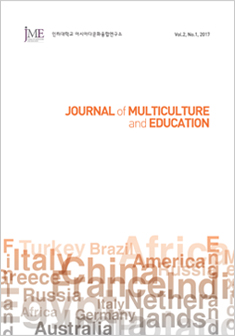
논문검색
HOME 학회지 논문검색
문화교류와 다문화교육, (2024)
pp.627~646
일본의 근대극장 논쟁과 ‘전통’ : 하나미치·회전무대를 중심으로
이 논문은 근대연극개량 논쟁에서의 극장공간에 관한 담론을 검토하였다. 근대연극 을 위해 첨예하게 대립한 주체들의 논쟁 속에서 하나미치·회전무대가 각각 어떠한 논 리로 배제되거나 혹은 어떠한 위상으로 도입하고자 하였는가는 매우 중요한 문제이다. 요컨대 스에마츠 겐초는 하나미치 폐지론을 주장하였고, 모리 오가이는 스에마츠의 대 극장론에 대항하여 소극장론을 주장하였다. 이러한 연극개량논쟁을 거쳐 근대적인 극 장 건축의 필요성이 대두되었고 1911년 제국극장 건설의 포석이 되었으며 극장의 제도 와 운영에 대한 관객의 관심이 높아졌다. 당시 지식인들을 중심으로 전개된 예술의 평 민화 즉, 당시 연극계에서 개척해야 할 장르로 통속연극의 담론이 전개되었고, 통속 및 오락성 담론의 한가운데에 놓이게 되는 것이 극장 개량이었다. 극장 공간은 ‘규모’와 흥 행성을 추구하게 되었으며 이는 문화통제의 논리와도 대립되지 않았다. 결국 예술의 오락성이라는 시각과 대극장의 모색을 둘러싼 담론의 접점에는 특히 ‘통속’연극이라는 성격이 공통된 ‘제국’의 문화로서 주요한 모티브가 될 수 있다는 점을 향후 주목할 문제 라고 생각한다. 다만, 일본의 ‘문명화의 사명’이라는 제국주의적 모색과 식민지에 수용 된 문화의 자기생명력으로 인하여 끊임없이 ‘역전’이 시도된다는 사실 또한 염두에 둘 것이다.
Controversy Over the Modern Theater in Japan, and Hanamichi/Revolving Stage
This paper first reviewed the discourse on theater space in the debate on modern theater improvement. In the debate between the subjects who were sharply opposed for modern theater, it is a very important question of what logic Hanamichi and the rotating stage were excluded or what status they tried to introduce. In short, Kencho Suematsu insisted on the abolition of Hanamichi, and Ogai Mori insisted on the theory of small theater against Suematsu’s theory of grand theater. Through this debate on theater improvement, the necessity of modern theater construction emerged, became the basis for the construction of the Imperial Theater in 1911, and the audience’s interest in the system and operation of the theater increased. The discourse of popular theater was developed as a genre to be pioneered in the theater world at the time, that is, the commonplace of art developed around intellectuals at the time, and it was the improvement of the theater that was placed in the middle of popular and entertainment discourse. Theater space pursued ‘scale’ and box office success, which was not opposed to the logic of cultural control. In the end, I think it is a matter to pay attention to in the future that the point of contact between the perspective of entertainment of art and the discourse surrounding the search for the grand theater can be a major motif as a culture of ‘empire’ in which the character of ‘popular’ theater is common. However, it will also be kept in mind that Japan’s imperial quest for ‘mission of civilization’ and the fact that ‘reversal’ is constantly attempted due to the self-life of the culture accepted by the colony.
 다문화와 교육(Journal of Multiculture and Education)
다문화와 교육(Journal of Multiculture and Education) 문화교류와 다문화교육
문화교류와 다문화교육